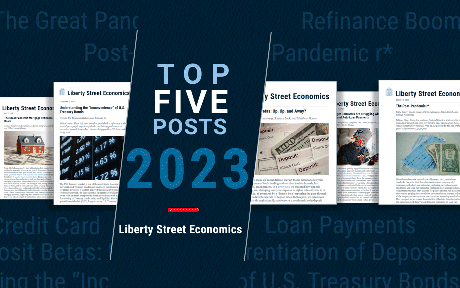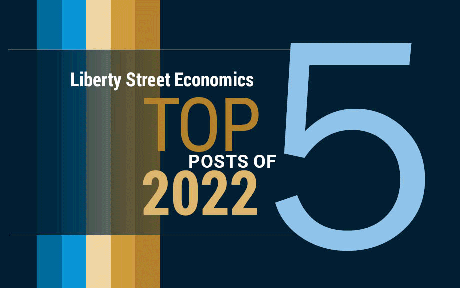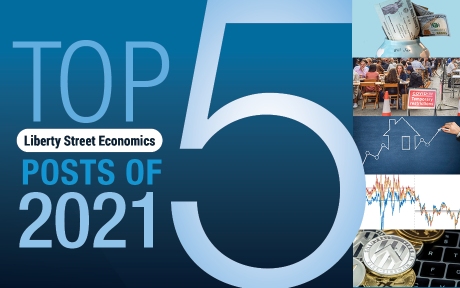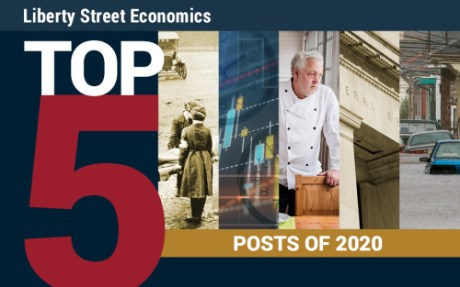Economics
Where Is R-Star and the End of the Refi Boom: The Top 5 Posts of 2023
The topics covered on Liberty Street Economics in 2023 hit many themes, reflecting the range of research interests of the more than sixty staff economists…


The topics covered on Liberty Street Economics in 2023 hit many themes, reflecting the range of research interests of the more than sixty staff economists at the New York Fed and their coauthors. We published 122 posts this year, exploring important subjects such as equitable growth and the economic impacts of extreme weather, alongside our deep and long-standing coverage of topics like inflation, banking system vulnerability, international economics, and monetary policy effects. As we close out the year, we’re taking a look back at the top five posts. See you again in 2024.
By Wenxin Du, Benjamin Hébert, and Wenhao Li
Since the global financial crisis (GFC), long-maturity Treasury bonds have traded at a yield consistently above the interest rate swap rate of the same maturity. The emergence of the “negative swap spread” appears to suggest that Treasury bonds are “inconvenient,” at least relative to interest rate swaps. Our most-read post of the year documents this “inconvenience” premium and highlights the role of dealers’ balance sheet constraints in explaining it. The analysis further explores the role of the Treasury yield curve slope in driving dealers’ long position in Treasury bonds post-GFC and describes a framework for thinking about how shifts in monetary and regulatory policies can affect these market dynamics. (February 6)
By Alena Kang-Landsberg, Stephan Luck, and Matthew Plosser
This April post drew press and reader attention for offering updated estimates of banks’ deposit betas in order to capture the extent of the pass-through of the federal funds rate to deposit rates. The authors also compared the speed of adjustment of deposit betas in this interest-rate hiking cycle to four other such cycles since 1995. They reported, for example, a cumulative deposit beta on interest-bearing accounts of almost 0.4 for the fourth quarter of 2022; that measure was on par with “peak beta” in the 2015-19 hiking cycle and achieved over one year rather than three. (April 11)
By Andrew Haughwout, Donghoon Lee, Daniel Mangrum, Joelle Scally, and Wilbert van der Klaauw
A sharp reduction in mortgage refinance originations seen in the Center for Microeconomic Data’s Quarterly Report on Household Debt and Credit for the first quarter provided an opportunity for these authors to mark an end to a refi boom that began with the COVID-19 pandemic. They look back at who refinanced, who cashed out on their home equity, and assess how much potential for consumption these transactions provided. They identify the COVID refi boom as lasting for seven quarters over 2020-21 in which approximately one-third of outstanding mortgage balances was refinanced (or fourteen million mortgages). Additionally, they estimate that $430 billion in home equity was extracted using mortgage refinances, a notable volume, though “not nearly as consequential as” the 2002-05 refi boom as a share of income. Some nine million borrowers refinanced their loans in the 2020-21 period without cashing out on equity and lowered their monthly mortgage payments—resulting in an aggregate reduction of $24 billion annually in housing costs, they reported. (May 15)
By Katie Baker, Logan Casey, Marco Del Negro, Aidan Gleich, and Ramya Nallamotu
These authors looked at trends in the long-run natural rate of interest, or r*, to find out if it had risen much in the aftermath of the COVID-19 pandemic, finding different answers from different models. According to VAR models, long-run r* remained roughly constant since late 2019, at 0.75 percent in real terms. A DSGE model by contrast had long-run r* rising by almost 50 basis points following the pandemic, to about 1.8 percent. The authors went on to discuss what would drive differences across the models and observed the relevance of the r* estimate for assessing the terminal (or peak) policy rate. (August 9)
See also:
The Evolution of Short-Run r* after the Pandemic (August 10)
By Andrew Haughwout, Donghoon Lee, Daniel Mangrum, Joelle Scally, and Wilbert van der Klaauw
This analysis of new U.S. household debt and credit data found “fairly large” increases in delinquency transition rates on credit card and auto loan balances for the year ended December 2022, up from unusually low levels during the pandemic and approaching pre-pandemic levels. When changing their focus from balances to borrowers, the authors found a higher percentage of credit card borrowers—particularly younger borrowers—missing payments than before the pandemic. They noted a similar although “slightly healthier” trend for auto loan performance with younger borrowers struggling relatively more. The authors explained that among the potential contributing factors to the uptick in delinquencies were rising car prices (the data showed the average new auto loan increasing to $24,000 in 2022 from $17,000 in 2019) and the end of pandemic support policies to households. (February 16)
Anna Snider is a senior editor in the Federal Reserve Bank of New York’s Research and Statistics Group.
How to cite this post:
Anna Snider, “Where Is R-Star and the End of the Refi Boom: The Top 5 Posts of 2023,” Federal Reserve Bank of New York Liberty Street Economics, December 21, 2023, https://libertystreeteconomics.newyorkfed.org/2023/12/where-is-r-star-and-the-end-of-the-refi-boom-the-top-5-posts-of-2023/.
Disclaimer
The views expressed in this post are those of the author(s) and do not necessarily reflect the position of the Federal Reserve Bank of New York or the Federal Reserve System. Any errors or omissions are the responsibility of the author(s).

Argentina Is One of the Most Regulated Countries in the World
In the coming days and weeks, we can expect further, far‐reaching reform proposals that will go through the Argentine congress.
Crypto, Crude, & Crap Stocks Rally As Yield Curve Steepens, Rate-Cut Hopes Soar
Crypto, Crude, & Crap Stocks Rally As Yield Curve Steepens, Rate-Cut Hopes Soar
A weird week of macro data – strong jobless claims but…
Fed Pivot: A Blend of Confidence and Folly
Fed Pivot: Charting a New Course in Economic Strategy Dec 22, 2023 Introduction In the dynamic world of economics, the Federal Reserve, the central bank…






















